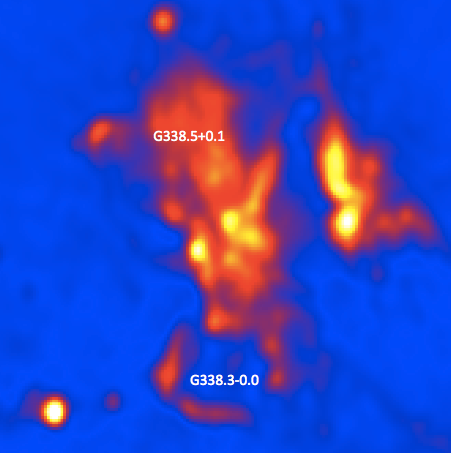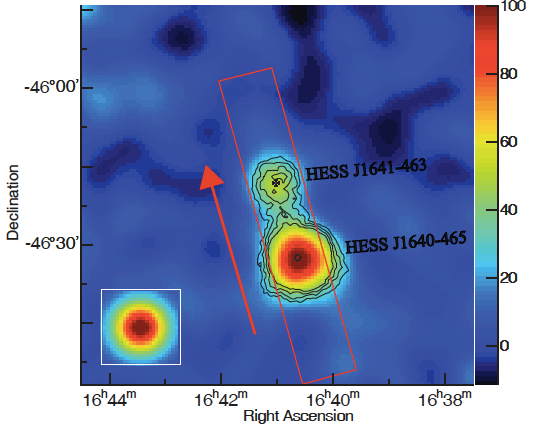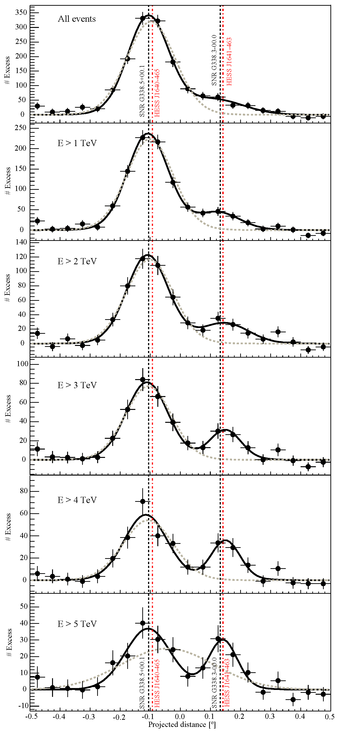The new source HESS J1641-463 emerging near HESS J1640-465
October 2012

With increasing exposure and statistics in the Galactic plane, complex gamma-ray sources are better resolved and frequently new structures appear. This is the case for a new source in the vicinity of the strong gamma ray source HESS J1640-465: in about 80 hours of data, a second nearby object emerges, see Fig. 1. The new source is particularly prominent at higher gamma ray energies: Fig. 2 illustrates how a tail in the distribution of gamma rays around HESS J1640-465 develops into a separate source, when the energy of gamma rays is gradually increased. The new source, HESS J1641-463, has a size consistent with the angular resolution of the instrument (shown as inset in Fig. 1) and is hence consistent with a point source of gamma rays. In contrast, HESS J1640-465 is clearly an extended object. HESS J1641-463 has a flux of about 2% of the Crab flux (above 1 TeV) and its gamma ray spectrum exhibits a spectral index of about 2.0. This new discovery nicely demonstrates the power and resolution of modern Cherenkov telescopes.
The newly discovered source is coincident with the radio supernova remnant G338.5+0.1, adjacent to the remnant G338.3-0.0 which coincides with HESS J1640-465 Fig. 3; in radio the two remnants are connected by the bright HII region G338.4+0.0. The pointlike nature of HESS J1641-463 suggests that the emission may not be connected with the extended supernova remnant, but rather with a pulsar wind nebula at the center of the remnant, driven by a - yet undetected - pulsar. Another option could be a binary system, similar to HESS J0632+057 However, no variability is detected in the gamma ray flux. Deeper X-ray observations covering the field will help to reveal the nature of this new source, for example by exposing an X-ray pulsar wind nebula as seen in other H.E.S.S. sources, e.g. in SNR G327.1-1.1.
Reference: "Discovery of the hard VHE γ-ray source HESS J1641−463", H.E.S.S. Collaboration, A. Abramoswki et al., in preparation.


